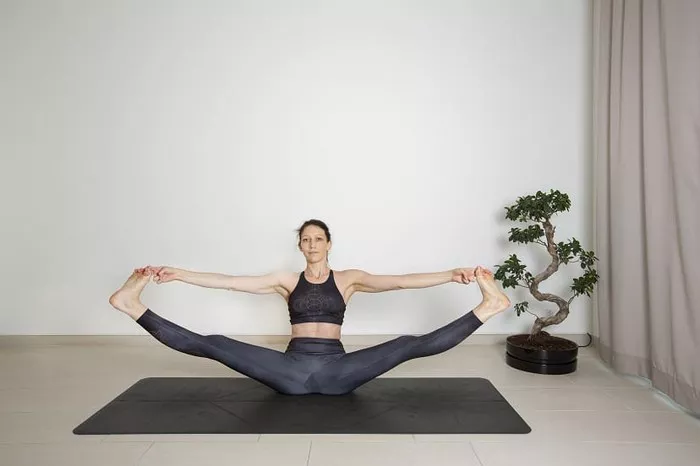Lizard Pose, or Utthan Pristhasana, is a dynamic yoga posture that offers a plethora of physical and mental benefits. Originating from the ancient practice of yoga, this pose carries deep symbolism and significance. In this article, we delve into the origins and symbolism of Lizard Pose, its physical and mental benefits, variations and modifications, step-by-step instructions, as well as precautions and contraindications.
Origins and Symbolism
Lizard Pose finds its roots in Hatha Yoga, a branch of yoga that focuses on physical postures (asanas) and breath control (pranayama) to achieve harmony between body and mind. The pose is believed to mimic the posture of a lizard, hence its name. In Hindu mythology, the lizard symbolizes regeneration, adaptation, and agility, qualities that are reflected in the practice of Lizard Pose. Furthermore, the lizard is often associated with the element of earth, representing grounding and stability, which are central aspects of this asana.
Physical and Mental Benefits
The practice of Lizard Pose offers a wide range of physical benefits, making it a valuable addition to any yoga routine. It targets various muscle groups, including the hips, groin, hamstrings, quadriceps, and core. By stretching and strengthening these areas, Lizard Pose helps improve flexibility, mobility, and stability in the lower body. Additionally, the pose stimulates the digestive organs, promoting better digestion and elimination of toxins from the body.
On a mental level, Lizard Pose encourages focus, concentration, and mindfulness. As practitioners engage in the pose, they are encouraged to cultivate awareness of their breath and sensations, fostering a sense of presence and inner calm. The deep hip opening aspect of the pose can also release stored tension and emotions, promoting emotional release and stress relief.
Variations and Modifications
Like many yoga poses, Lizard Pose can be modified and adapted to suit individual needs and abilities. Variations of the pose include:
1. Low Lizard Pose: This variation involves keeping the back knee lowered to the ground, providing additional support and stability, particularly for beginners or those with limited flexibility.
2. Twisted Lizard Pose: In this variation, the torso is twisted towards the front leg, intensifying the stretch in the hips and adding a spinal twist, which can help improve spinal mobility and relieve tension in the back.
3. Arm Balance Lizard Pose: For more advanced practitioners, this variation involves lifting the back knee off the ground and balancing on the hands, requiring strength, stability, and core engagement.
Modifications can also be made using props such as yoga blocks or blankets to provide support and assist in achieving proper alignment in the pose.
Step-by-Step Instructions
To practice Lizard Pose, follow these step-by-step instructions:
- Begin in a high plank position with the hands shoulder-width apart and the wrists aligned under the shoulders.
- Step the right foot forward between the hands, placing it to the outside of the right hand.
- Lower the left knee to the ground, untucking the toes, and slide the left leg back until you feel a comfortable stretch in the left hip and groin.
- Keep the hands grounded and the chest lifted, lengthening the spine.
- Option to stay here or, for a deeper stretch, lower onto the forearms, bringing the elbows to the ground.
- Hold the pose for 5-10 breaths, breathing deeply and evenly.
- To release, gently press into the hands, straighten the arms, and step back to plank pose. Repeat on the other side.
Precautions and Contraindications
While Lizard Pose offers numerous benefits, it is important to practice with caution and be mindful of any limitations or contraindications. Some precautions to consider include:
1. Knee Issues: Individuals with knee injuries or discomfort should be cautious when practicing Lizard Pose, especially when lowering the back knee to the ground. Using a blanket or cushion under the knee can help provide additional support and alleviate pressure.
2. Hip Flexor Strain: Those with tight hip flexors or hip flexor strain should approach the pose with caution and avoid forcing the hips too low. Gradually ease into the stretch and listen to your body’s signals.
3. Lower Back Issues: If you have lower back issues or discomfort, be mindful of how deep you go into the pose and avoid overarching the lower back. Engage the core muscles to support the spine and consider practicing modifications or alternative poses.
4. Pregnancy: Pregnant individuals should avoid deep twisting or compressing the abdomen, making modifications as necessary to ensure comfort and safety.
As with any yoga practice, it is advisable to consult with a qualified yoga instructor or healthcare provider before attempting Lizard Pose, especially if you have any pre-existing medical conditions or concerns.
Conclusion
Lizard Pose is a powerful yoga asana that offers a myriad of physical, mental, and emotional benefits. Rooted in ancient tradition and symbolism, this pose invites practitioners to explore themes of adaptability, regeneration, and grounding. By incorporating Lizard Pose into your yoga practice and approaching it with mindfulness and awareness, you can unlock its transformative potential and experience greater harmony and balance in body and mind.























